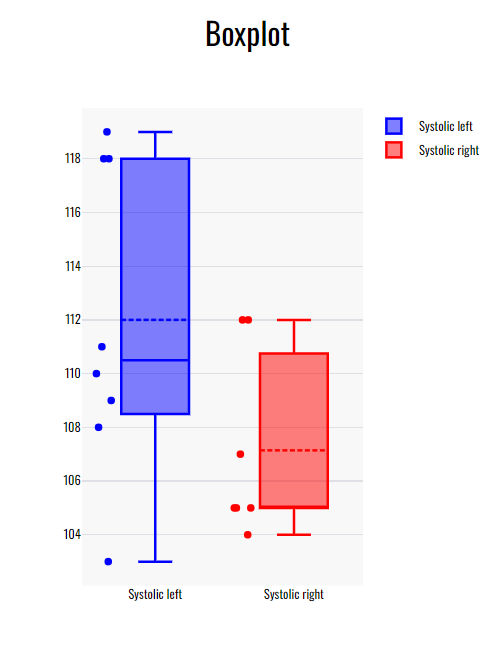ng0rge
#427
Just a thought experiment, but if you had BP cuffs on both arms to measure simultaneously, and you buried one hand and arm in ice and put the other in very hot water… wouldn’t the blood pressures read differently? Which is “the pressure that all the organs are seeing.”?
Blood pressure is complicated in that there are multiple factors, including vascular tone (sympathetic or parasympathetic), blood volume, cardiac contractility and any defects in the vessels. I’m sure there are a lot more.
The pressure that we are really interested in (and your brachial blood pressure is a proxy for it) is what the pressure is in your proximal aorta. Even then there is pressure based upon gravity with standing … but knowing what pressures your coronary arteries, kidneys and brain are getting will relate to what your brachial pressure is (e.g. in the arm).
It’s based upon that relationship and known impact on vascular diseases in heart/periphery/kidney/brain that the recommendations for goals for BP are made.
It’s dynamic - each time you stand, your vessels going to your brain have to adjust their tone in order to account for maintaining adequate pressure in the vessels so you don’t pass out.
5 Likes
Gravity is also an issue for the BP in the arm and increases if the cuff is lower than the heart and reduces if the cuff is higher.
4 Likes
Are shoppers drug mart BP measurers in Canada accurate? I always get higher readings from them than the doctor’s office, though I wonder if the doctor’s office is accurate b/c their cuffs don’t go as tight on small arms
3 Likes
tj_long
#432
Long topic. In conclusion, is Telmisartan still recommended as the first drug for hypertension?
Does anyone have experience with the hawthorn supplement, does it really work for blood pressure?
Telmisartan seems to be the favorite. That’s what I take to keep my BP in line.
4 Likes
blsm
#434
I don’t know anything about the accuracy of the device you mentioned but I had to end up going with a small cuff. My arm is 22cm fwiw.
Sorry if you already know this information but since you’re a smaller person like me I figured I’d share it just in case.
1 Like
mccoy
#435
This discussion made me curious about the variability of BP data and the differences among arms. I did a personal n=1 experiment, which may be replicated by other people interested in the bilateral values.
I did 8 measurements on the left arm, 7 on the right (I just forgot the last one, sorry). The device was an Omron Evolve, which is described in a scientific article with its precision and accuracy. The raw data in successive measurements are illustrated in the following graph.
For statistical considerations though, a boxplot chart is probably more interesting.

The boxplot illustrates many things, first, there is a wide variability in the left arm, less so in the right one. The two measures are probably from different data populations, which must be treated separately. However, I would surely repeat the measurements because the bimodal distribution plus a lower outlier in the left arm would suggest some anomaly in the instrument, the measurement procedure, or the BP trend itself.
5 Likes
J0hn
#436
I can recommend the Withings Connect blood pressure monitor, it’s a good piece of kit. Like you, I also have the Withings scales.
2 Likes
tj_long
#437
I would assume that then the resting heart rate must also be low if the stroke volume is high? How low?
1 Like
Good to hear user feedback on the Withings BP device, now I’m motivated to get one 
I like the PWV pulse wave velocity function in the Withings Body Cardio scale. PWV is a better indicator of vascular health than BP alone. I have posted my PWV results over 3 years in my measurements thread. Interestingly, they can be improved 
3 Likes
Its an interesting question. I have the unusual situation of intermittent binge drinking which pushes up RHR. I am still planning on having a period of tea total, but I need to fit that around my schedule so it works with where I am living (I am going to another city for a court case soon) and blood tests (I like to change strategy just after a blood test).
tj_long
#440
And of course the stroke volume is not fixed in relation to the heart rate, but you would think that the resting heart rate tells something under normal conditions.
I think that is right. I have been doing some really interesting experimentation relating to SV, RHR etc. I have not yet worked out solid conclusions. However, I think there is an issue about mitochondrial quality that pushes up SV and reduces RHR.
1 Like
Blood pressure can differ between arms, sometimes by as much as 10 mmHg or more. A significant difference can indicate potential problems, such as atherosclerosis, which is plaque buildup in the arteries. This plaque can block blood flow to organs like the heart or brain, which can lead to heart attack and stroke. People with an arm-to-arm difference of 15 points or more are also twice as likely to have peripheral artery disease, which is cholesterol-clogged arteries in the arms, legs, or other parts of the body.
ng0rge
#443
John, just because you’re English doesn’t mean you can change “Teetotaler” to “tea total”. My resting heart rate is high, too. Should I consider a period of “coffee total”?
https://www.vocabulary.com/dictionary/teetotaler
My Rhr is 50. I don’t think that is high.
ng0rge
#445
Using @AnUser 's cholesterol theory, you shouldn’t stop til you bring it down to zero.
3 Likes